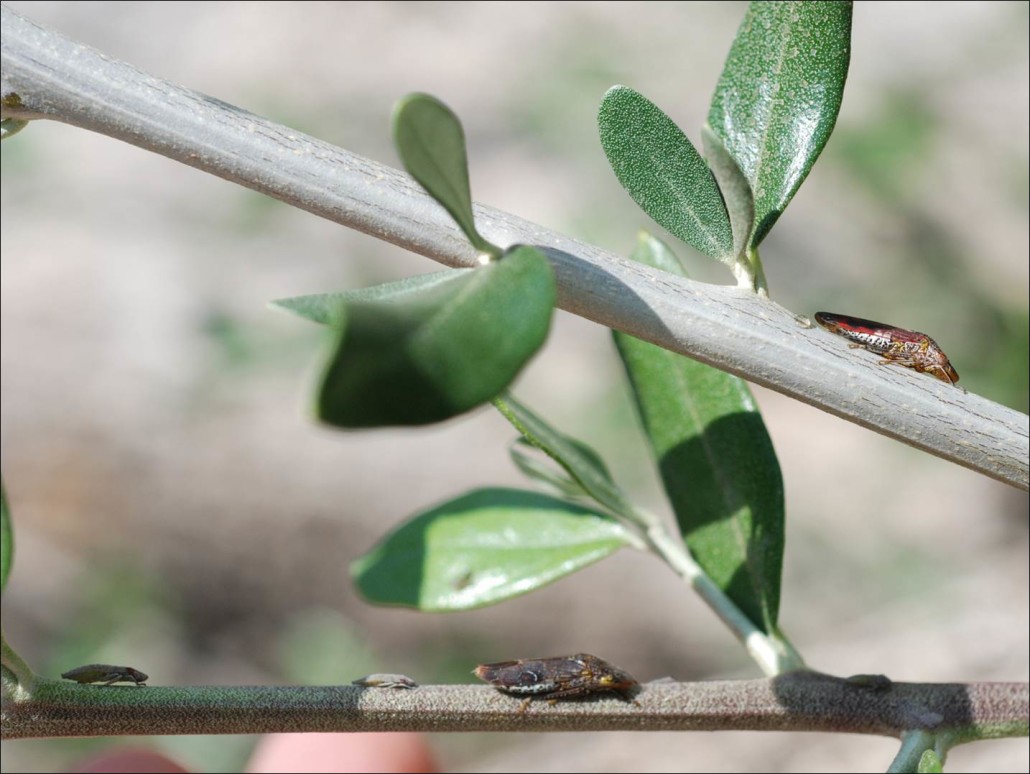
Bringing the OOCC Informational Meeting to YOU
In January, the Olive Oil Commission of California held a very important informational meeting for industry members. The event, which took place at the California Farm Bureau Federation office in Sacramento, was well attended and informative. And so, we are posting recordings of the presentations from this meeting here on our website. This way, you can have the benefit of attending this important event without leaving your desk chair.
Simply visit the Members Section of our website where you will find five separate video files posted to YouTube. It does take some time to watch them all, but there is much valuable information included. Of course, you can pick and choose and watch only those you are most interested in. Below is a summary of what each presentation includes.

Evolution of the Olive Oil Industry in California: Part 1
Albert Katz of KATZ Farm, Chair of the OOCC Advisory Board, kicked off the day’s presentations with history of the California olive oil industry. Katz, who is also a founding member of the California Olive Oil Council, provided interesting perspective on how the California olive oil industry has developed over the years and traced concern about adulterated olive oil to the days of Mark Twain. His presentation uses illustrative quotes and introduces many of the industry’s early founders. This interesting account is well worth viewing and we encourage you to do so here.
Evolution of the Olive Oil Industry in California: Part 2
Jeff Colombini, OOCC Chairman, brings us to present day as he reviews the reasons for establishing the Olive Oil Commission of California and how it differs from other olive oil industry groups. Colombini outlines the functions of the OOCC which are to: establish mandatory grade and labeling standards; conduct horticultural, milling, and olive oil research and disseminate information to the industry and trade. He points out the Commission is not authorized to advertise or promote olive oil, so this is a job that will continue to be provided by groups like the California Olive Oil Council. He does provide a great overview of the mandatory sampling and testing program conducted by the California Department of Food and Agriculture along with detailed information about how the OOCC was established through the state legislature, how Board representatives are elected and how OOCC assessment dollars are being spent. This information is a must for all California olive oil producers to know.
Overview of the OOCC Testing Program
Paul Miller, International Advisor to the Australian Olive Association (AOA), gave a crash course in olive oil testing—what the tests measure and what the results tell us—and explained the context of international standards. Recently retired as long-time president of the AOA—which has had a quality-testing program for seven years under its Code of Practice—Miller talked about Australia’s experiences and described the California results as a good outcome and congratulated the growers on a job well done. He also pointed out where the test results present an opportunity for producers to learn and improve. His informative presentation contains so much good information that we encourage all industry members and anyone interested in the future of California olive oil to view it here.
Olive Oil Composition and Testing Data
Dan Flynn of UC Davis Olive Center presented two reports on the research projects at the UCDOC funded by the OOCC. The first is an analysis of the quality testing data from the 2014-15 harvest, available here. The second is part of the ongoing data collection effort seeking to better understand and document the natural variability of California olive oil. In this report, we see that some California olive oils—mostly from desert areas—show natural levels of certain components that fall outside the standard ranges set using olive oil from traditional cultivars grown in their traditional Mediterranean areas.
Olive Knot Research
In the first of two research presentations on olive oil diseases, Dr. Jim Adaskaveg of University of California, Riverside provides an important update on efforts to control Olive Knot. Olive knot has always been an issue for California olive growers but the rise of mechanical harvesting and pruning has resulted in greater challenges for control. Through a recent project funded by OOCC assessments, Adaskaveg’s team has been working on several practices which seem to have promise including the use of quaternary ammonium as a sterilizer on equipment to prevent spread of the pathogen. In addition, two new bactericides — kasugamycin and oxytetracycline – used in rotation with copper seem to be very effective in preventing infection. The presentation is well worth watching.
Olive Leaf Scorch
Dr. Rodrigo Krugner, with the USDA’s Agricultural Research Service, wrapped up the day’s presentations. Krugner’s work isolating the pathogen X. fastidiosa—thought to be responsible for a disease called Olive Leaf Scorch in California—from olive trees led to an unexpected and fascinating finding: when healthy olive trees were inoculated with the pathogen, there was no higher incident of Olive Leaf Scorch in the inoculated plants than there were in the un-inoculated plants. If X. fastidiosa is a factor in Olive Leaf Scorch in CA, it is only a part of a much bigger picture. We encourage you to watch the full presentation here.